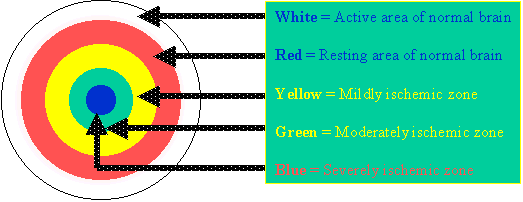Summary: Cerebral Palsy is a relatively common disability, involving mal-development of the muscle controlling powers of parts of the body, resulting in characteristic disabilities. It can be detected in infancy. Treatment, especially our Multimode type of interventions, initiated soon after birth, and definitely earlier than 5 years, may be able to control a significant amount of disability. Last updated January 21, 2007
Cerebral Palsy: The basics |
In January 2003, the American College of Obstetricians and Gynecologists (ACOG) and the American Academy of Paediatrics (AAP) released a publication entitled Neonatal Encephalopathy and Cerebral Palsy: Defining the Pathogenesis and Pathophysiology. The Task Force met over a period of 3 years and worked with expert consultants, conducted a literature review, and received input and endorsements from professional societies and organizations. It is the most extensive peer-reviewed document on this subject published to date. The crux of this concise report from WebMd.com is that the majority of newborn brain injury does not occur during labor and delivery. Instead, most instances of neonatal encephalopathy and cerebral palsy are attributed to events that occur prior to the onset of labor.
There is a wide intermingling of the types of CP, but, a few types may be identified as predominating among them.
1. Spastic
Spasm and rigidity of movement at limbs. Mentally may be near normal.
· Hemiplegic
One half of body involved
· Diplegic
Both lower limbs involved
· Quadriplegic
Need lifelong support
All four limbs involved
Visual and sensory impairment.
Epilepsy is common problem.
2. Athetoid
Spasticity accompanied by constant uncontrolled bizarre movements
· Usually very intelligent
· Hearing loss common, but not always
· Legs turn inward to form a scissor like deformity. May be able to walk with supporting devices, or use a wheel chair.
· Eye problems may hamper activity.
3. Ataxic
· Uncontrolled movements, especially of lower limbs, when trying to use the limb, with loss of balance and coordination; staggering gait; unsteady hand function; speech not clear.
· Lack of balance and coordination, leading to frequent fall.
· Often mentally retarded
4. Mixed
Permutations and combinations of the above, with mixed features.
Single Photon Emission Computerized Tomography or SPECT Scan refers to the administration of a medically used ultra-short acting radioactive tracer that diffuses into the brain tissue in direct proportion to the degree of tissue fluid perfusion of that area. A gamma camera is used to take a photograph of the brain. The differently perfused areas show up as white to red (= very good to good perfusion), yellow to green (fair to a little perfusion) and blue (= almost no perfusion).
A SPECT Scan or the more advanced PET Scan (Positron Emission Tomography) are the two means to show the actual ischemic areas, if any, in brain. In such cases, if diagnosed and treated in infancy (before the age of 4 to5 years), using Hyperbaric Oxygen Therapy and/or brain metabolism/perfusion enhancing therapies (e.g. Unani Drugs, etc.), such children may show variable degrees of improvement in cognitive function, hearing, eye contact, activity level and intelligence. If these are taken advantage of by giving intensive prolonged therapy with Pediatric Therapy of CP or Peto Techniques, or other forms of planned target oriented Occupational Therapy, Botox/Phenol nerve Blocks (to correct equine deformity of foot, etc.), Acupuncture (to improve neuronal activity), etc., then a rapid improvement or return towards normalcy of many functions may be achieved. This may significantly alter the balance in favor of an improved quality of life both for the disabled child and his/her parents and caregivers.
We are pioneering this combined approach in the name of UDAAN Multimode Early Medical Intervention Therapy.
Hypoxic Types of Cerebral PalsyThe before / during / after birth injury that caused blood flow abnormality to brain to cause CP, shows in a SPECT Scan report as a blue zone of very low perfusion or dead brain tissue, surrounded by a green to yellow zone of Penumbra or half dead tissue, kept alive but functionless / dormant / hibernating by tissue fluid carrying some amount of oxygen and nutrients, leaking in from surrounding normally perfused tissues (inactive red or active white zone). |
 |
As per information available with us, the Penumbra develops significant degree of permanent degeneration and scarring (Leukodystrophy) within 5 years or so. Hence, interventional therapies to try to reverse some of the developing disabilities must be administered before this time. Since diagnosis of CP becomes evident at birth (for the experienced Pediatric Neurologist) or within the first year or two for any person trained in CP management (Neurologist, Rehabilitation Specialist, Pediatrician, Special Educator, Occupational Therapist, etc.), hence there should not be any reason why intervention therapies need be delayed. Even the mother can see that her one year child's mental / physical / functional development is not keeping up with the Joneses. The above list of specialists is the one to turn to for help. PLEASE do not listen to the friendly neighborhood "know it all" person who tells you not to worry, and that your child is a little weak, and everything will turn out OK in six months time. In six months, there may be some progress, but, by that time, the other children have advanced twice as far or further. This gap, between a disabled child and a normal child keeps broadening as time progresses, making it more and more difficult to try to bridge the gap and reverse at least some of the damage.
| news flash |